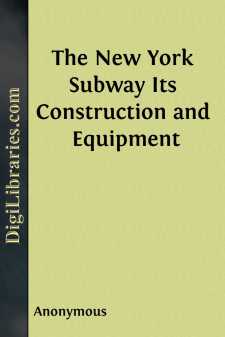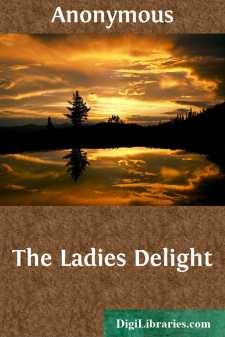Categories
- Antiques & Collectibles 13
- Architecture 36
- Art 48
- Bibles 22
- Biography & Autobiography 813
- Body, Mind & Spirit 142
- Business & Economics 28
- Children's Books 15
- Children's Fiction 12
- Computers 4
- Cooking 94
- Crafts & Hobbies 4
- Drama 346
- Education 46
- Family & Relationships 57
- Fiction 11828
- Games 19
- Gardening 17
- Health & Fitness 34
- History 1377
- House & Home 1
- Humor 147
- Juvenile Fiction 1873
- Juvenile Nonfiction 202
- Language Arts & Disciplines 88
- Law 16
- Literary Collections 686
- Literary Criticism 179
- Mathematics 13
- Medical 41
- Music 40
- Nature 179
- Non-Classifiable 1768
- Performing Arts 7
- Periodicals 1453
- Philosophy 64
- Photography 2
- Poetry 896
- Political Science 203
- Psychology 42
- Reference 154
- Religion 513
- Science 126
- Self-Help 84
- Social Science 81
- Sports & Recreation 34
- Study Aids 3
- Technology & Engineering 59
- Transportation 23
- Travel 463
- True Crime 29
The New York Subway Its Construction and Equipment
by: Anonymous
Categories:
Description:
Excerpt
INTRODUCTION
The completion of the rapid transit railroad in the boroughs of Manhattan and The Bronx, which is popularly known as the "Subway," has demonstrated that underground railroads can be built beneath the congested streets of the city, and has made possible in the near future a comprehensive system of subsurface transportation extending throughout the wide territory of Greater New York.
In March, 1900, when the Mayor with appropriate ceremonies broke ground at the Borough Hall, in Manhattan, for the new road, there were many well-informed people, including prominent financiers and experienced engineers, who freely prophesied failure for the enterprise, although the contract had been taken by a most capable contractor, and one of the best known banking houses in America had committed itself to finance the undertaking.
In looking at the finished road as a completed work, one is apt to wonder why it ever seemed impossible and to forget the difficulties which confronted the builders at the start.
The railway was to be owned by the city, and built and operated under legislation unique in the history of municipal governments, complicated, and minute in provisions for the occupation of the city streets, payment of moneys by the city, and city supervision over construction and operation. Questions as to the interpretation of these provisions might have to be passed upon by the courts, with delays, how serious none could foretell, especially in New York where the crowded calendars retard speedy decisions. The experience of the elevated railroad corporations in building their lines had shown the uncertainty of depending upon legal precedents. It was not, at that time, supposed that the abutting property owners would have any legal ground for complaint against the elevated structures, but the courts found new laws for new conditions and spelled out new property rights of light, air, and access, which were made the basis for a volume of litigation unprecedented in the courts of any country.
An underground railroad was a new condition. None could say that the abutting property owners might not find rights substantial enough, at least, to entitle them to their day in court, a day which, in this State, might stretch into many months, or even several years. Owing to the magnitude of the work, delay might easily result in failure. An eminent judge of the New York Supreme Court had emphasized the uncertainties of the situation in the following language: "Just what are the rights of the owners of property abutting upon a street or avenue, the fee in and to the soil underneath the surface of which has been acquired by the city of New York, so far as the same is not required for the ordinary city uses of gas or water pipes, or others of a like character, has never been finally determined. We have now the example of the elevated railroad, constructed and operated in the city of New York under legislative and municipal authority for nearly twenty years, which has been compelled to pay many millions of dollars to abutting property owners for the easement in the public streets appropriated by the construction and maintenance of the road, and still the amount that the road will have to pay is not ascertained. What liabilities will be imposed upon the city under this contract; what injury the construction and operation of this road will cause to abutting property, and what easements and rights will have to be acquired before the road can be legally constructed and operated, it is impossible now to ascertain."
It is true, that the city undertook "to secure to the contractor the right to construct and operate, free from all rights, claims, or other interference, whether by injunction, suit for damages, or otherwise on the part of any abutting owner or other person." But another eminent judge of the same court had characterized this as "a condition absolutely impossible of fulfillment," and had said: "How is the city to prevent interference with the work by injunction? That question lies with the courts; and not with the courts of this State alone, for there are cases without doubt in which the courts of the United States would have jurisdiction to act, and when such jurisdiction exists they have not hitherto shown much reluctance in acting.... That legal proceedings will be undertaken which will, to some extent at least, interfere with the progress of this work seems to be inevitable...."
Another difficulty was that the Constitution of the State of New York limited the debt-incurring power of the city. The capacity of the city to undertake the work had been much discussed in the courts, and the Supreme Court of the State had disposed of that phase of the situation by suggesting that it did not make much difference to the municipality whether or not the debt limit permitted a contract for the work, because if the limit should be exceeded, "no liability could possibly be imposed upon the city," a view which might comfort the timid taxpayers but could hardly be expected to give confidence to the capitalists who might undertake the execution of the contract.
Various corporations, organized during the thirty odd years of unsuccessful attempts by the city to secure underground rapid transit, claimed that their franchises gave them vested rights in the streets to the exclusion of the new enterprise, and they were prepared to assert their rights in the courts....












